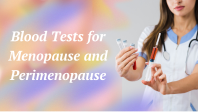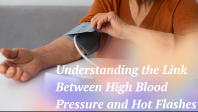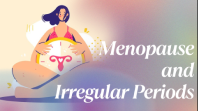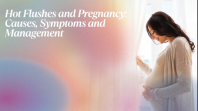Understanding the Link Between High Blood Pressure and Hot Flashes
November 27, 2024
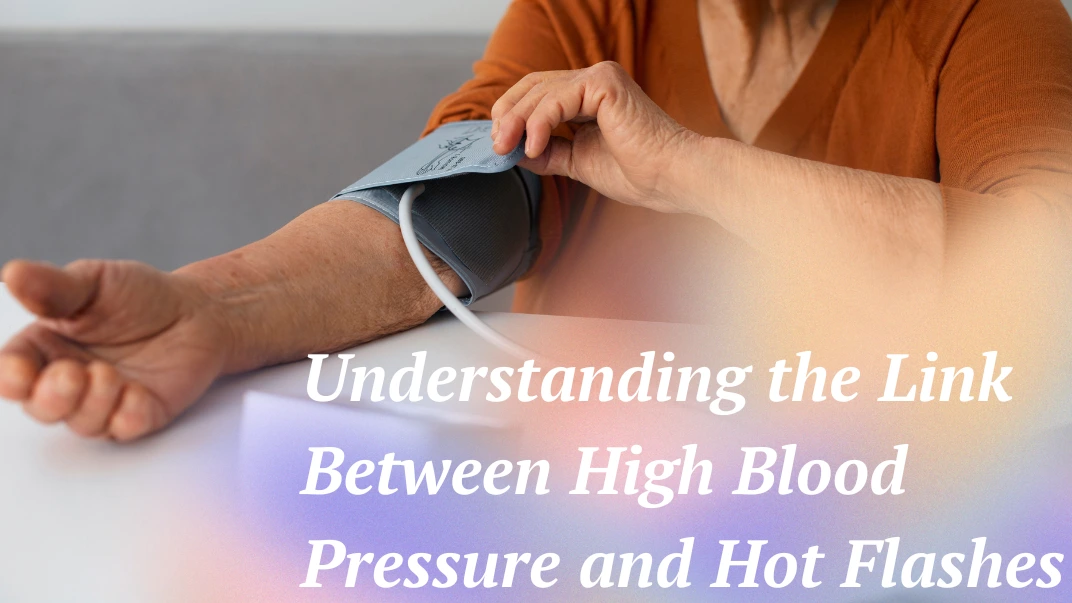
High blood pressure (hypertension) and hot flushes are two common health issues that many women face, particularly as they near and navigate through menopause. While high blood pressure is primarily recognized as a cardiovascular problem, it can also significantly influence overall well-being, including the body's reaction to menopausal symptoms. One of the most prevalent symptoms of menopause is hot flushes, which many women encounter during this transitional period.
In this article, we will explore the relationship between hot flushes and blood pressure, examining how these two concerns are interconnected, their effects on women during menopause, and the strategies that can be employed to manage both. With insights from experts and practical advice, we aim to empower women to take charge of their health during this important stage of life.
What Are Hot Flushes?
Hot flushes are sudden episodes of intense heat that usually start around the face, neck, or chest and can spread throughout the body. They are commonly associated with menopause but can also occur in other stages of life due to hormonal changes, stress, or certain health conditions.
The symptoms of a hot flush may include:
- A sudden feeling of warmth, often accompanied by sweating
- Flushing of the skin
- Increased heart rate or palpitations
- A chilly feeling after the flush subsides
While the exact cause of hot flushes is not completely understood, they are believed to result from hormonal fluctuations, particularly the reduction of estrogen levels during menopause. These changes affect the hypothalamus, the part of the brain responsible for regulating temperature. When estrogen levels decrease, the hypothalamus may misinterpret normal body temperature as too high, triggering a hot flush.
High Blood Pressure and Its Causes
High blood pressure, also known as hypertension, occurs when the force of the blood against the walls of the arteries is consistently too high. Untreated hypertension can lead to serious health issues, such as heart disease, stroke, and kidney damage.
Common risk factors for high blood pressure include:
- Age (it becomes more common as people get older)
- A family history of hypertension
- Lack of physical activity
- Poor diet (high in sodium, low in potassium)
- Excessive alcohol consumption
- Stress
- Smoking
For women, menopause is a significant risk factor for developing high blood pressure. As estrogen levels decline, blood vessels may lose flexibility, increasing the risk of hypertension. This can also lead to a sudden rise in blood pressure during menopause, further complicating overall health.
The Connection Between Hot Flushes and High Blood Pressure
Hot flushes and high blood pressure are separate health issues, but studies indicate they may be linked, particularly during menopause.
1. Hormonal Changes Affect Blood Pressure
As menopause progresses, the decline in estrogen impacts the cardiovascular system. Estrogen plays a crucial role in keeping blood vessels flexible, allowing them to expand and contract as necessary. When estrogen levels drop, blood vessels may become less elastic, which can lead to high blood pressure. Concurrently, these hormonal shifts can heighten the occurrence and intensity of hot flushes.
2. Hot Flushes and Blood Pressure Increases
Hot flushes are associated with the activation of the sympathetic nervous system, which can elevate heart rate and blood pressure. During a hot flush, some women may experience brief increases in blood pressure, potentially contributing to long-term hypertension. This effect is particularly evident with hot flushes and high blood pressure at night, where night sweats can disrupt sleep and raise stress levels.
3. Stress and Anxiety
Stress and anxiety often trigger both high blood pressure and hot flushes. Increased stress can lead to adrenaline release, which raises blood pressure and intensifies hot flushes. This creates a cycle where the stress from one condition worsens the other.
4. Sleep Disruption
Hot flushes, especially during the night, can interfere with sleep, resulting in fatigue and irritability. Poor sleep quality can exacerbate hypertension and complicate the management of both conditions.
Difference between hot flashes and high blood pressure
| Feature | Hot Flashes | High Blood Pressure |
|---|---|---|
| Cause | Hormonal changes, particularly a drop in estrogen during menopause. | Increased force of blood against artery walls, often due to lifestyle factors or age. |
| Symptoms | Sudden warmth, sweating, flushing of the skin, and a racing heartbeat. | Headaches, shortness of breath, dizziness, and fatigue. |
| Duration | Typically lasts a few minutes per episode. | Can be a chronic condition requiring long-term management. |
| Risk Factors | Menopause, stress, and certain medications. | Age, family history, obesity, smoking, and high-sodium diets. |
| Treatment | Cooling strategies, hormone therapy, and stress management. | Lifestyle changes, medications like ACE inhibitors, and regular monitoring. |
Managing Hot Flushes and High Blood Pressure
Despite the challenges, there are several steps women can take to manage and control hot flushes and high blood pressure during menopause simultaneously.
1. Maintain a Healthy Diet
A balanced diet is essential for managing both blood pressure and hot flushes.
Foods to include:
- Leafy greens: High in potassium, which helps regulate blood pressure.
- Whole grains: Support stable blood sugar levels and improve heart health.
- Soy products: Contain phytoestrogens that may help alleviate hot flushes.
- Fatty fish: Provide omega-3 fatty acids that reduce inflammation and support vascular health.
Foods to avoid:
- Salty foods: Excess sodium can raise blood pressure.
- Caffeine and alcohol: Both can trigger hot flushes and elevate blood pressure.
- Processed foods: Often high in unhealthy fats and sodium.
2. Exercise Regularly
Regular physical activity helps lower blood pressure, reduce the frequency of hot flushes, and improve sleep. Aim for at least 150 minutes of moderate-intensity exercise per week, such as walking, swimming, or yoga.
3. Manage Stress
Since stress can aggravate both conditions, stress management techniques like mindfulness, deep breathing, and progressive muscle relaxation can make a significant difference.
4. Stay Cool and Hydrated
Use fans or cooling towels and stay hydrated to reduce the impact of hot flushes.
5. Monitor Blood Pressure Regularly
Tracking blood pressure can help identify sudden changes, especially during menopause.
Medical Interventions
If lifestyle changes aren’t enough, medical options include:
- Blood pressure medications: Such as ACE inhibitors or beta-blockers.
- Non-hormonal treatments: For hot flushes, options like SSRIs or gabapentin may help.
- Hormone replacement therapy (HRT): May alleviate both hot flushes and high blood pressure under medical supervision.
Sudden High Blood Pressure During Menopause
Sudden increases in blood pressure during menopause can happen for several reasons:
- Hormonal Changes: The decline in estrogen levels affects the elasticity of blood vessels, which can lead to higher blood pressure.
- Hot Flushes: The sympathetic nervous system gets activated during hot flushes, potentially causing temporary spikes in blood pressure.
- Stress: Anxiety and sleep disturbances related to menopause can worsen blood pressure fluctuations.
What to Do: It's important to monitor your blood pressure regularly, manage stress, and consult a healthcare professional if these episodes become frequent or severe.
What Is Normal Blood Pressure During Menopause?
Normal blood pressure during menopause is generally considered to be below 120/80 mmHg. However, due to hormonal changes, women may be at a higher risk of developing high blood pressure, defined as 130/80 mmHg or above. Regular check-ups are essential for early detection of any changes.
Perimenopause, High Blood Pressure, and Anxiety
During perimenopause, fluctuating hormone levels, especially estrogen, can:
- Heighten sensitivity to stress, which may lead to increased anxiety.
- Decrease the elasticity of blood vessels, resulting in higher blood pressure.
- Increase the likelihood of experiencing heart palpitations or a racing heartbeat.
To manage both anxiety and blood pressure, consider:
- Engaging in stress-relief techniques.
- Following a balanced diet and maintaining a regular exercise routine.
- Consulting a healthcare provider for medical or therapeutic support if needed.
Will High Blood Pressure Stop When Menopause Is Over?
High blood pressure may continue after menopause because the decrease in estrogen is permanent. This change affects the flexibility of blood vessels, raising the risk of long-term hypertension. However, leading a healthy lifestyle can greatly lower these risks and help keep blood pressure in check.
Menopause, High Blood Pressure, and Hot Flushes
Hot flushes can cause temporary increases in blood pressure due to activation of the sympathetic nervous system. When combined with hormonal changes related to menopause, the risk of chronic hypertension can rise. Implementing cooling strategies and making lifestyle adjustments can help lessen the effects of hot flushes on blood pressure.
Can Menopause Cause High Blood Pressure? (NHS Perspective)
Yes, according to the NHS, menopause can contribute to high blood pressure due to:
- Declining estrogen levels, which reduce blood vessel elasticity.
- Weight gain, common during menopause, which increases cardiovascular strain.
- Stress and poor sleep due to menopausal symptoms.
The NHS recommends regular blood pressure checks, a healthy lifestyle, and seeking medical advice for persistent issues.
Female Hormones and Blood Pressure
Estrogen: Protects cardiovascular health by maintaining blood vessel flexibility. Its decline during menopause increases blood pressure risks.
Progesterone: Its reduction may also contribute to vascular changes, although its role is less pronounced.
Cortisol: Elevated stress levels during menopause can lead to an increase in blood pressure through higher cortisol levels.
Conclusion
The connection between hot flushes and blood pressure is an important aspect of menopause health. Hormonal changes, stress, and lifestyle factors play a role in both conditions. By adopting healthy habits, managing stress, and seeking medical advice when needed, women can navigate menopause with greater ease.
Proactively managing high blood pressure and hot flashes improves overall well-being, enabling women to transition through menopause with confidence and control.

